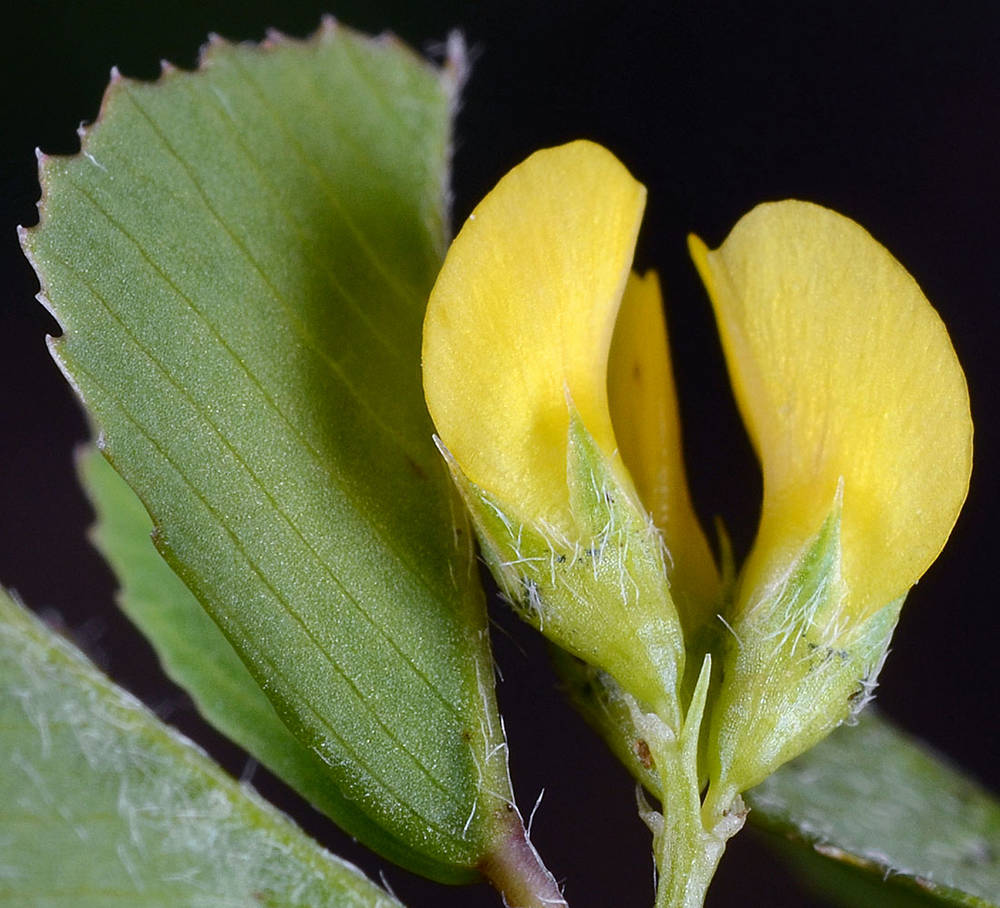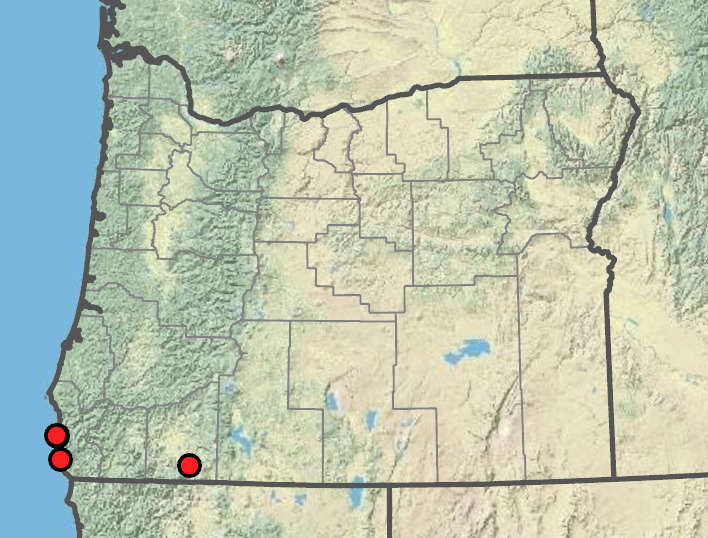Medicago praecox
early medic, Mediterranean medic
decumbent, glabrous to sparsely pubescent.
pinnate;
leaflets wedge-shaped or obovate; length > width, 3–8 mm, bases cuneate;
margins distally denticulate;
veins raised;
tips emarginate;
surfaces abaxially slightly pubescent, adaxially glabrous;
petioles 2–5 mm;
petiolules 0.5–2 mm;
stipules 2–4 mm;
margins strongly lacerate.
1–3-flowered;
peduncles 1.5–3 mm;
pedicels 0.5–1 mm.
calyces 1.5–2 mm;
corollas 2.5–4 mm, yellow or variegated yellow-purple; ephemeral.
spirally coiled 3–4 turns; spherical or disk-like, 5–10 mm, sparsely hairy; dorsal sutures spiny;
spines hooked, 2–3 mm.
several, reniform, 1.7–2.4 × 0.9–1.3 mm, yellow to brownish yellow.
=14.
Medicago praecox
Gravelly and grassy areas, roadsides, near beaches. Flowering Apr–May. 0–300 m. Est. CA; Australia, Europe. Exotic.
Medicago praecox has tiny flowers that appear similar to M. polymorpha, but the leaflets of the latter are usually glabrous and generally twice as long as those of M. praecox. Medicago praecox also has fewer flowers per inflorescence.
Nurul Khalib, Melanie Link-Perez



